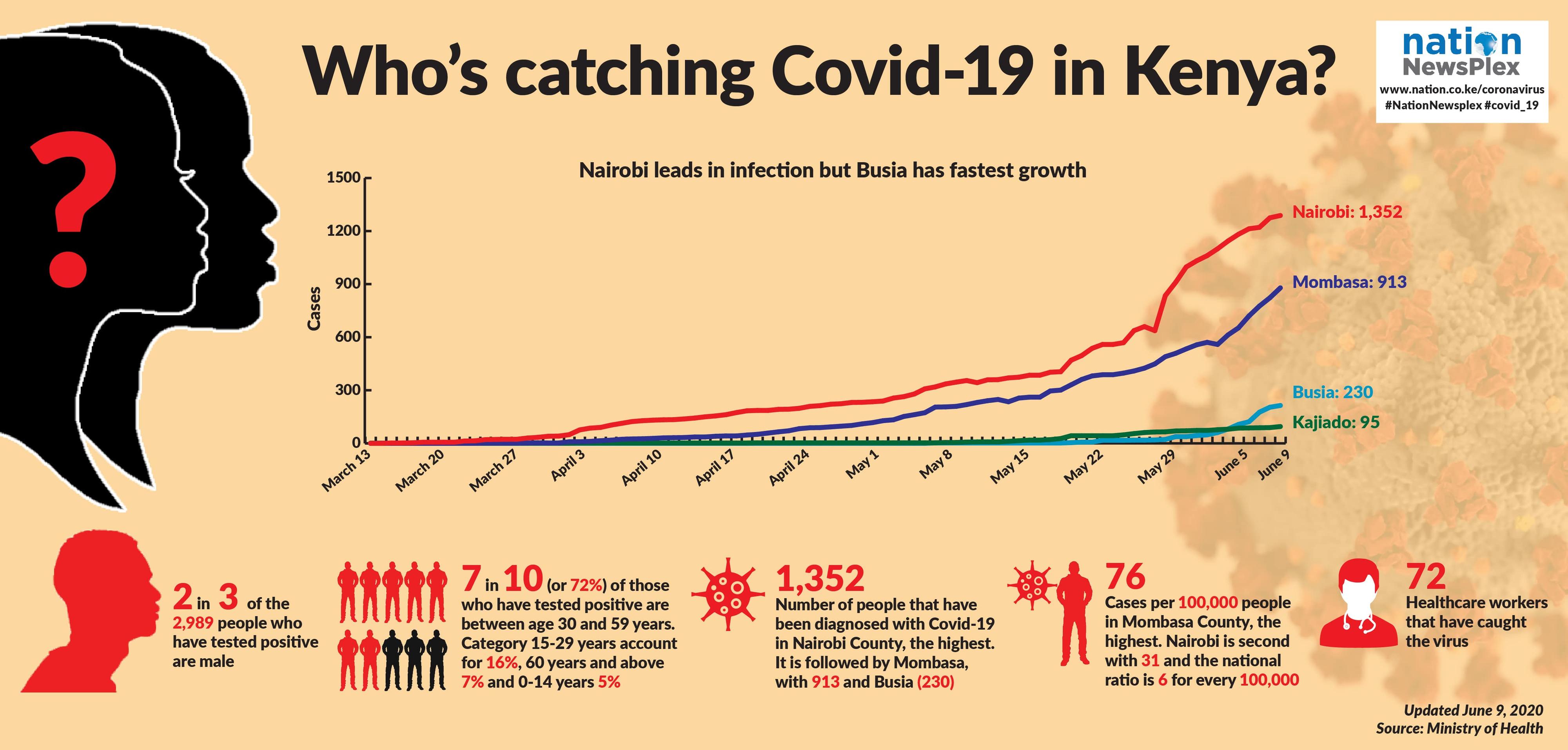Premium
Mixed fortunes for air transport sector
DESIGN | MICHAEL MOSOTA
The contribution of air travel to the economy is sluggish even as the number of domestic passengers and volume of cargo transported shrinks, reveals a Nation Newsplex analysis of air travel data.
Air transport’s contribution to Kenya’s gross domestic product fluctuated between 0.3 percent and 0.4 percent in the past five years. During the same period, the output from the sector jumped by more than a third to Sh183.1 billion in 2017 from Sh131.4 billion in 2013.
The increase in earnings was partly due to international passenger arrivals and departures which rose steadily for the second year, increasing by six percent to 6.1 million in 2017 from 5.7 million the previous year, according to the Economic Survey 2018.
While there was an upswing in international arrivals in the first half of 2017 over the previous year, the numbers fell in the second half, largely due to uncertainties around the prolonged electioneering period.
But the number of domestic passengers dipped slightly from four million in 2016 to 3.9 million last year.
As fewer Kenyans opt for local air travel and more airlines join the domestic market, competition in the subsector is stiffer.
This year alone has witnessed new players joining various domestic routes in the country. For instance, the Nairobi-Kisumu route had two new players – Britex Air Services and Freedom Airlines – while Safarilink has added the number of daily flights. The expansion has intensified competition with other carriers, such as Fly540, Jambojet and Kenya Airways that already serve the route.
Airports in Kenya handled a total of 10 million arriving and departing domestic and international passengers, as well as those transiting to other countries. This was an increase of three percent from 9.8 million in 2016.
Of these, two in three were international passengers, with an estimated three million being arrivals. In an election year traditionally marred by fewer visitors due to fears of political unrest, this was a surprise seven percent increase from 2.8 million international arrivals in 2016.
The number of international arrivals increased in the past five years, except for 2015, when it decreased by two percent to 2.6 million from 2.7 million in 2014. This was attributed to security concerns and travel advisories from some European markets.
Miraa business
The volume of cargo handled in the past four year has trended downwards except for last year, when cargo volumes increased by 17 percent to 291 million tonnes from 249.5 million tonnes in 2016. But the subsector’s improvement was short-lived. A year-on-year analysis shows that the amount of cargo handled in July 2018 dipped by 16 percent to 25,566 tonnes compared to 30,422 tonnes in July the previous year. The three main cargo handling airports − JKIA, Moi and Eldoret − recorded dips in cargo volumes.
Wilson Airport is the only one that recorded an upturn in cargo handled, by 15 percent from 190,325 tonnes to 218, 510 tonnes. This could be credited to more miraa being transported to Somalia and the Horn of Africa, following the highly contested product ban in the UK and the Netherlands.
Lokichoggio and Malindi airports did not handle any cargo in the period reviewed.
Despite the decline in local passengers and cargo volume, domestic aircraft flights (landings and take-offs) increased by two percent from 204,803 in 2016 to 207,831 in 2017. This was higher than international flights, which increased by only 0.5 percent from 93,029 to 93,497 in the same period. This could suggest that aircraft are carrying fewer goods and passengers than their capacity.
The Kenya Airports Authority (KAA) registered a year-on-year increase in aircraft movements in airports and airstrips from 27,179 in July 2017 to 27,955 in July 2018.
The year-on-year figures show that JKIA was the busiest, at 9,874 flights in July this year, a six percent rise over the same period in 2016. The airport benefitted from enhanced flight frequencies by scheduled carriers as well as charter operations. Wilson Airport was the second busiest, with 9,612 movements. However, this was a decline of five percent from 10,092 flights last year, an observation KAA attributed to fewer test training flights.
Moi International Airport was third (2,332), followed by Malindi Airstrip (1,209) and Ukunda Airstrip (956). Whereas Moi International Airport recorded an increase in flights due to additional charters serving the tourism market on the Coast, Malindi’s was linked to increased training flights.
Isiolo Airport had the least activity, at 40 flights, a fall by a third from 61 in the same period last year. The Sh2.7 billion facility, launched in 2017 by President Kenyatta, is still operating below its capacity, handling only four flights a week since its opening, despite having an estimated capacity of 350,000 passengers annually. The KAA links the low activity to the discontinuation of scheduled Fly-SAX flights.
Tourism boom
Ukunda Airport had the highest increase in passenger traffic. The number of travellers who passed through the airport jumped by almost half from 11,759 to 17,348 passengers in July 2018, driven by increased tourism activity on the Coast. Wilson Airport, on the other hand, had its passenger traffic go up by 41 percent, a growth linked to the tourist activities at the Maasai Mara related to the wildebeest migration spectacle.
About two-thirds of international visitors in 2017 were on holiday, whereas 13 percent had jetted in for business-related engagements, and six percent were in transit.
It was not all bright in international travel though. While there was an upswing in international arrivals in the first half of 2017 over the previous year, the numbers fell in the second half, largely due to uncertainties around the prolonged electioneering period
The national flag carrier Kenya Airways blamed the unusually long campaign season for its shrinking turnover.
Read part two of the series on air safety and air crash investigation performance in the Sunday Nation tomorrow





